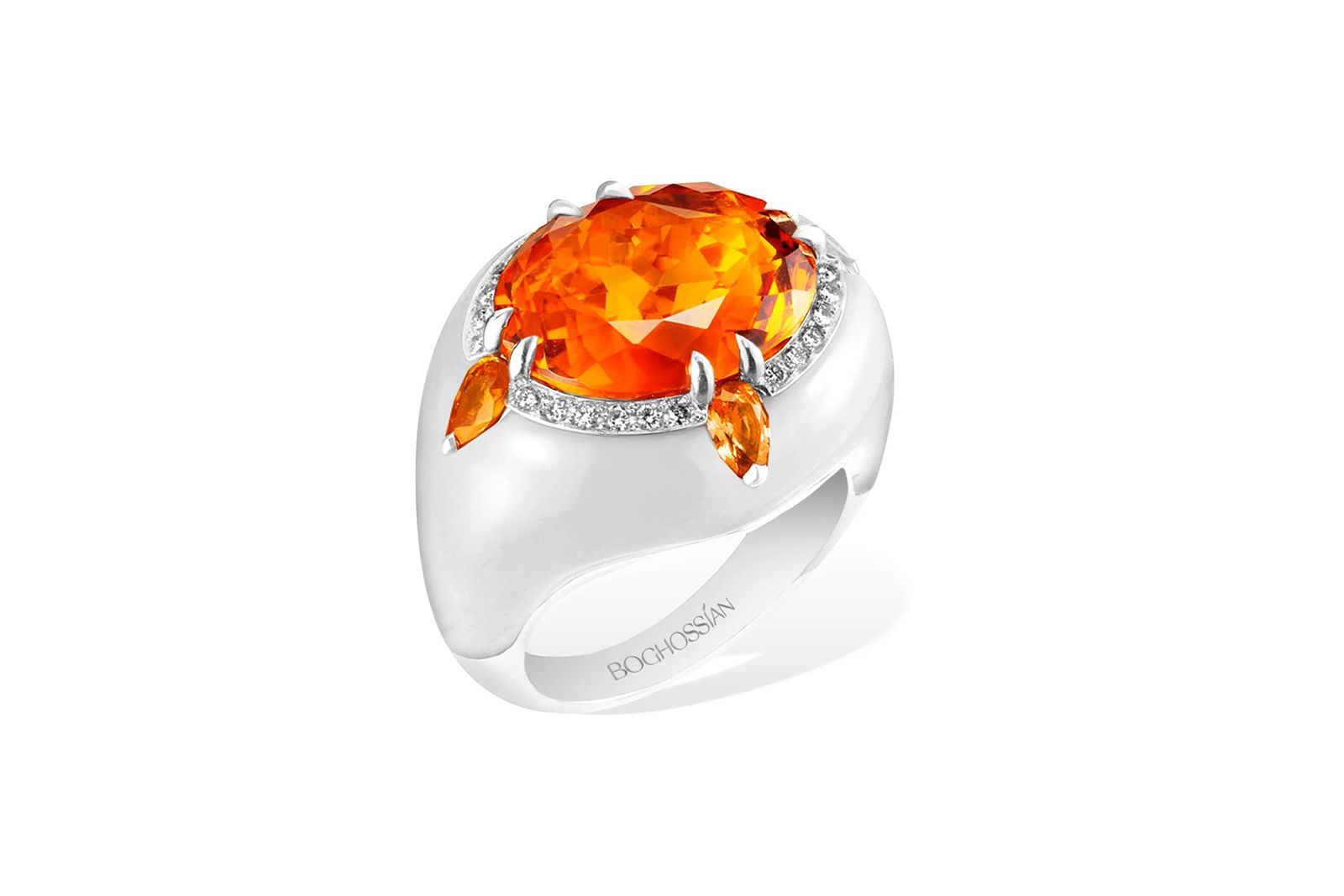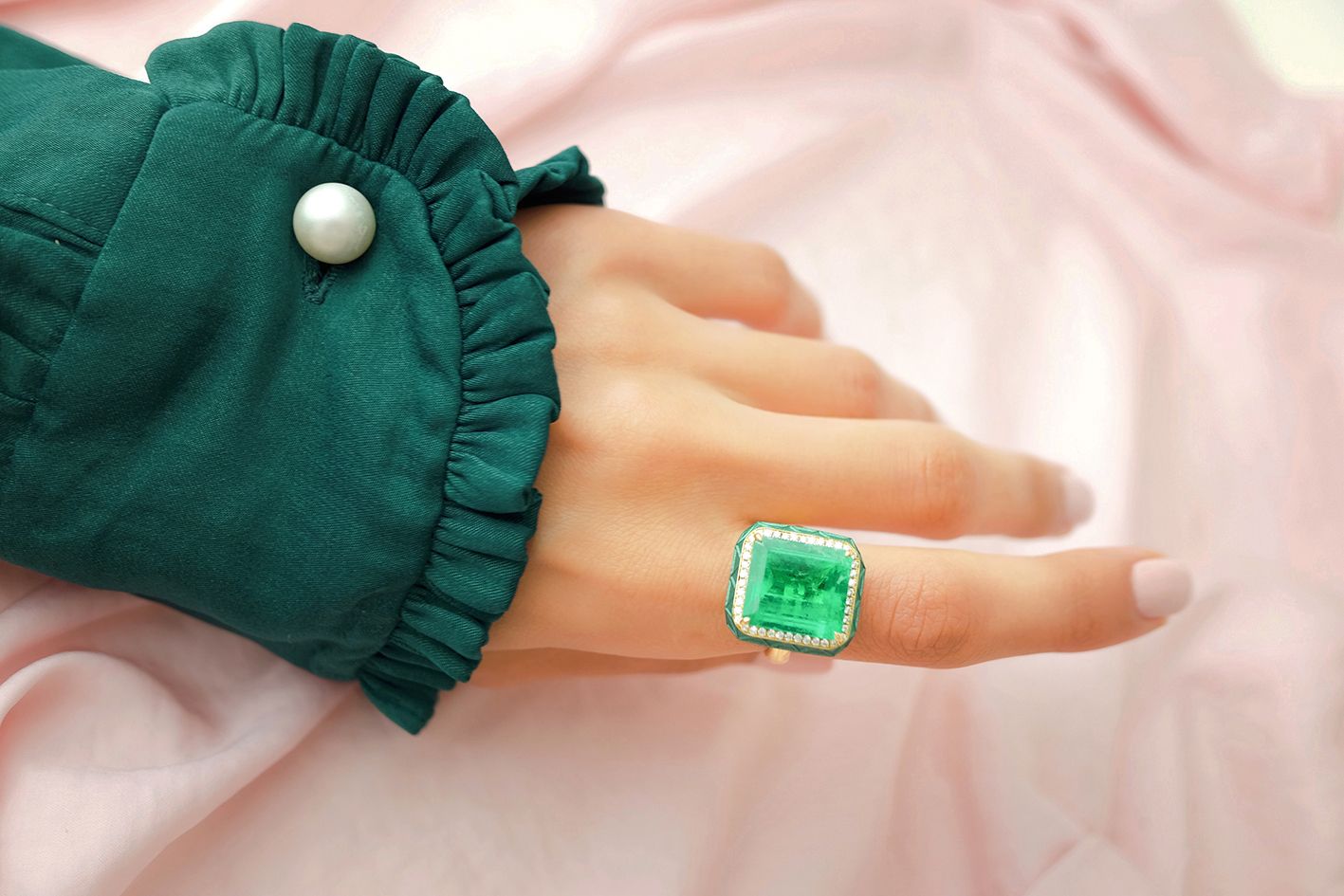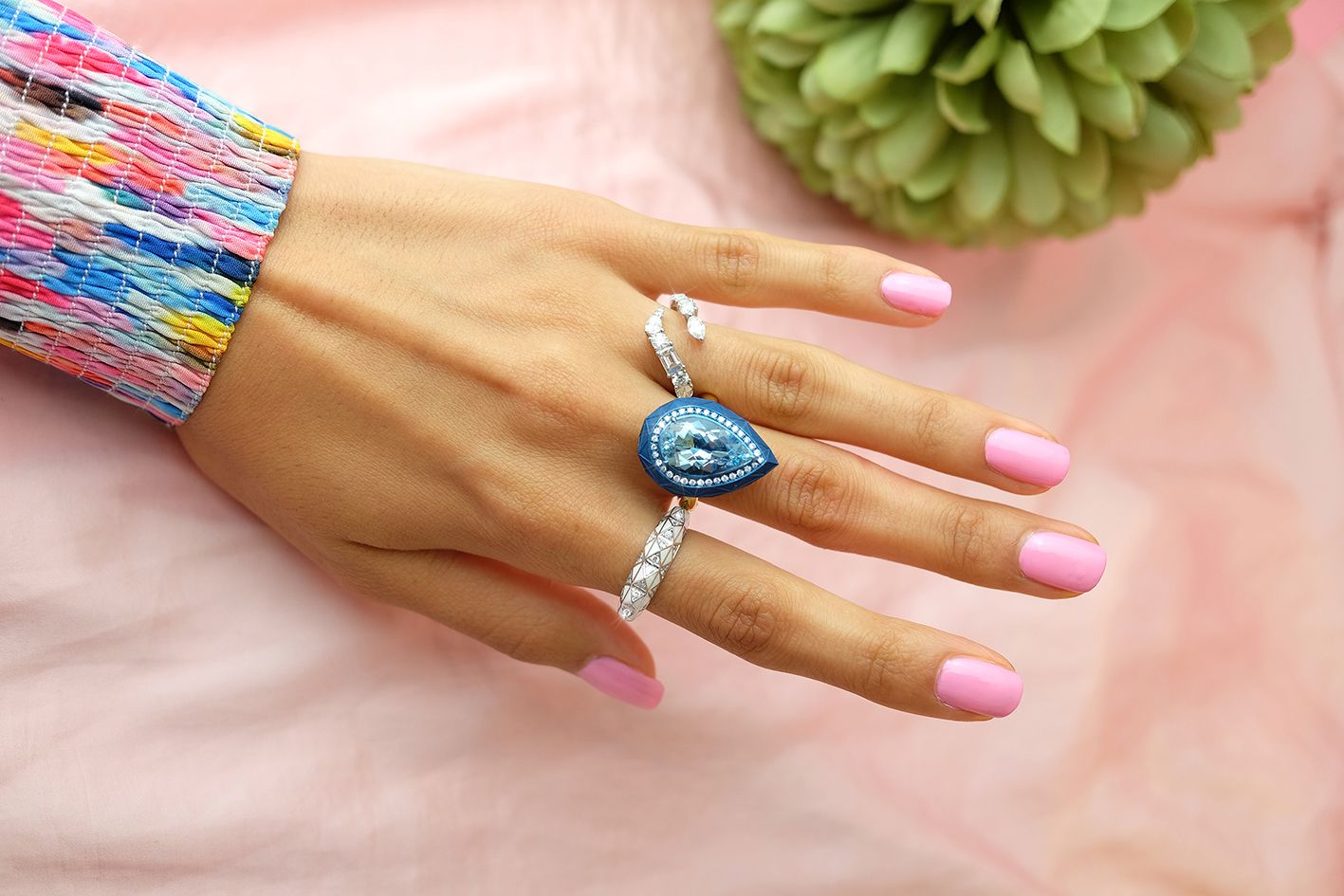

Pop of Colour: The Brightest Baubles to Wear This Summer
With an unseasonably warm summer ahead of us, a refreshing dose of juicy jewels is an absolute must. Here are some colourful pieces that will bring a splash of colour to your summer wardrobe.
Over the last few years, there has been a rapid rise in statement colourful rings using a specific technique known as inlay. It seems that everywhere you look, brands are releasing pieces featuring new and inventive ways of using this technique to create jaw-dropping pieces. However, the pieces appearing on the market today do not feature that classic look we are used to seeing. The ‘new inlay’ technique achieves a bold aesthetic by using a central stone as its focal point and then creating a wide rim around its border by using another gem or material as the frame. Let’s take a closer look at how these pieces are made and the talented designers behind them.
The inlay technique is the process by which custom-cut stones are set with a special glue into a piece of jewellery – no prongs needed! When done properly, the final result is flawless with a seamless appearance. This is perhaps one of the most difficult effects to achieve in fine jewellery and requires the work of master craftsmen. Jewellery designer Jamie Books, founder of Mason and Books Jewellery, sees the inlay process akin to a scientific experiment when choosing what stones to use in her fine jewellery pieces: “To start, I select the rough for each piece. Gemstones naturally have colour variations, so choosing the right one is important. It’s the perfect blend between art and science because you never fully know what a piece will look like until it’s in the final polish step. To the untrained eye, one can think it is enamel we use, although I do love enamel, and we may use it in future collections, it’s important to me that people know ours is not that. If for no other reason, due to the effort and care put into each ground inlay”.
Enamel is one of the main materials used to frame central stones. The process begins with a powder or a paste applied over a piece of metal jewellery and then heated to a temperature exceeding 1,500 degrees. The enamel then fuses to the metal, creating a colourful coating. Designers such as Robinson Pelham, NeverNot and Jenna Blake set gemstones in enamel frames of contrasting colours to highlight the natural colour of a gemstone or add a modern feel to a design. This look can also be achieved through rhodium-plated metals.
Jewellery designer Emily P. Wheeler is a veteran when it comes to setting a centre stone within another precious gem. She often uses gems with a contrasting colour or finishing to the centre stone in the surrounding frame, creating a perfect platform for its colour to stand out and shine: “I use the inlay technique in a lot of my work. This setting method can be quite challenging as it demands a lot of care and precision to ensure that the stones sit properly within the piece and stay secure. It can take multiple attempts to get the stones carved just right for a piece to work. In the end, a well-done inlay looks almost like magic is holding the piece together.” Another brand that has mastered this technique is Boghossian, whose invention of the ‘Kissing’ technique allowed gems to sit atop each other as if they were held together by nothing but a kiss.

Emily P. Wheeler I Heart Pink Ring in gold and pink sapphire, and a Chubby ring in gold, white gold and coloured gemstones
As you can see, whether it’s monochromatic or complementary colours, gemstone frames or gold finishings, this updated method of the inlay technique has taken the jewellery world by storm. Here are some more enchanting colourways and finishings for you to peruse.

David Webb
David Webb
Ring in gold, turquoise, enamel and diamond

Boghossian
Boghossian
Ring in gold, citrine, chalcedony and diamond

Alice Cicolni
Alice Cicolni
Candy Lacquer Signet ring in gold, grey enamel and morganite

Jenna Blake
Jenna Blake
Nautical ring in gold, coral and diamond

Emily P. Wheeler
Emily P. Wheeler
Chubby ring in gold, white gold, diamond, tourmaline and amazonite

Nicholas Varney
Nicholas Varney
Ring in gold, banded chalcedony, sapphire and diamond

David Morris
David Morris
Electra Ring in white gold, tsavorite, chrysoprase and diamond

NeverNot
NeverNot
Green Rock ring in gold, enamel and purple topaz

Marina B
Marina B
Elena Ring in gold and multicoloured gemstones

Andy Lif
Andy Lif
Ring in gold, turquoise and tourmaline

Fabio Salini
Fabio Salini
Ring in titanium, coloured gemstone and diamond

Gemella
Gemella
Tanzanite ring

Katherine Jetter
Katherine Jetter

WORDS
Livia Primo Lack , a Watches and Jewelry journalist and content creator, has covered all aspects of luxury jewels and timepieces. With a strong background in the editorial world, she has developed a keen eye for emerging designers as well as for groundbreaking innovations from iconic brands

















